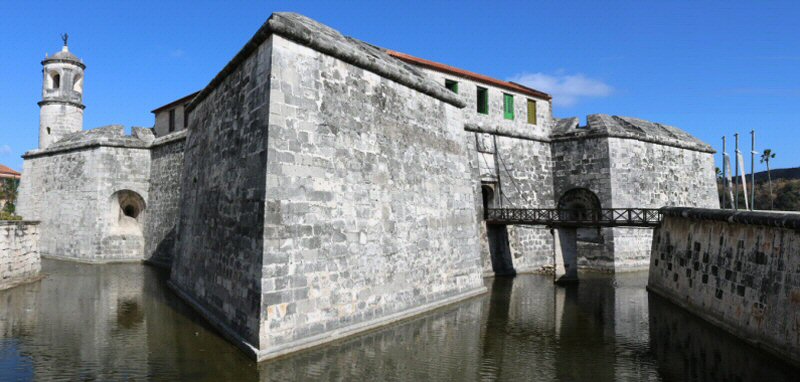

ARCHITECTURAL FEATURES
The thick, sloping walls of the fortress
that are 6 meters (20 feet) wide and 10 meters (33 feet) high,
are rather impressive. They were made of limestone, brought from
the Havana shoreline. The castle is ringed by a moat, filled
with water, so that the building can be accessed by a wooden
drawbridge. Beside this main entrance at the southeast wall, the
castle has also another entrance at its northern wall that can
be seen from Malecón, but nowadays it is closed by an iron gate.
This second gate was used to gain access directly to the sea, as
the castle ran alongside the rocks and the sea that at the time
edged up to the base of the castle. Today, Avenida de Puerto
that was built later on a landfill, lies between the castle and
the sea. As you cross the moat by the drawbridge, you will see
the royal coat of arms, carved in stone above the gateway.
The floor of the castle is in the shape
of a perfect square with four enormous triangular bastions at
each corner, slicing the dark waters of the surrounding moat.
With the surrounding moat, the castle resembles the four-leaf
clover and thus create a perfect symmetry; a feature that is one
of the main characteristics of the Renaissance architecture of
the 16th century. Manifestly, this typical four-point ground
plan was influenced by those being built in Spain in the
medieval ages. On the forecourt of the castle, several historic
Spanish cannons are positioned with their original cannon balls. The
whole area is enclosed by an iron fence that is similar to the
fence around the historical buildings in the Plaza de Armas.